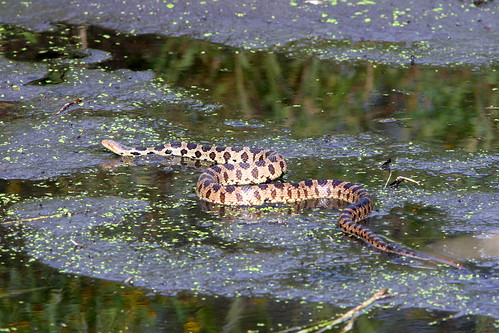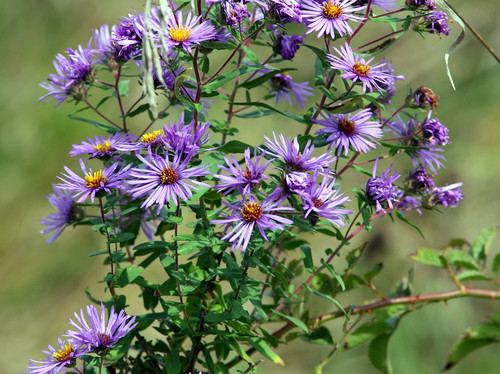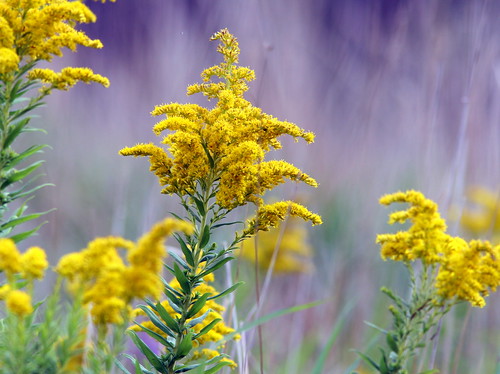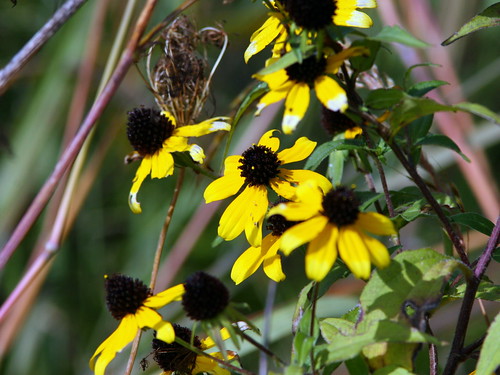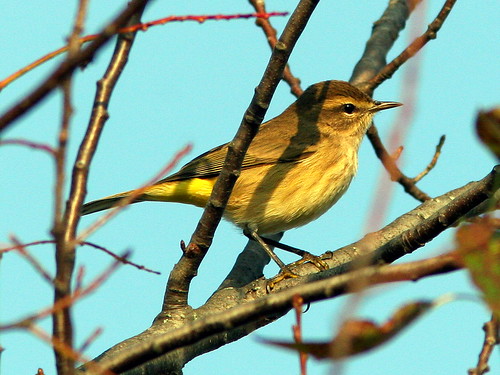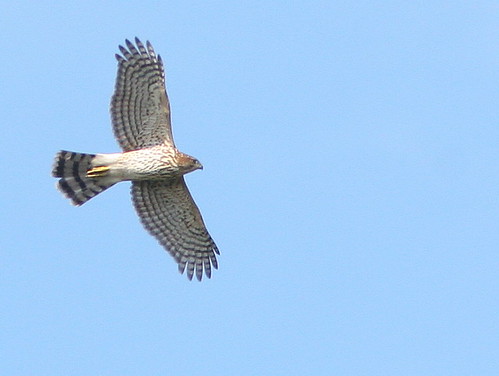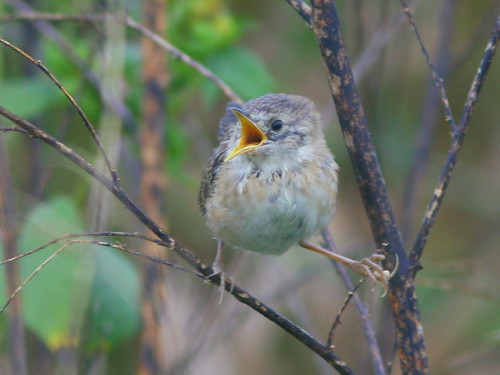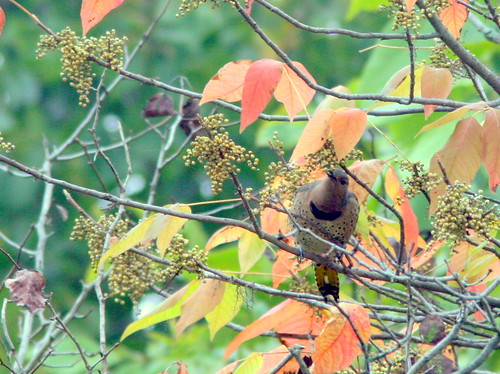As outdoor lovers, one of the advantages that we enjoy, by splitting our time between South Florida and northern Illinois, is our exposure to a a greater variety of habitats. In Florida, the autumnal equinox goes virtually unnoticed, while here in Illinois we have seen a radical change during the past couple of weeks. The soft greens of the prairie have turned to golden brown, peppered by red leaves of sumac and a final flush of yellow, white and blue wildflowers. In the woods, falling leaves are a source of distraction as they compete with flitting birds for our attention.
Purple asters:
White asters:
Goldenrod:
Black-eyed composites that I call “Suzies:”
A Bumblebee browses on a daisy-like composite: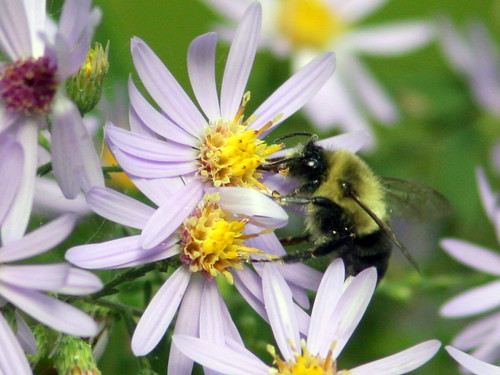
…and a honeybee collects pollen on one of the few thistles that has not yet gone to seed: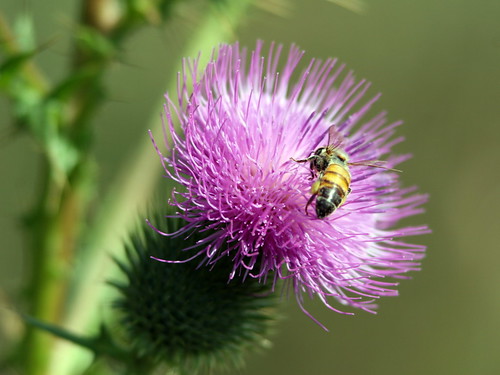
The hairs on the calyx of this White Campion entrap small insects, perhaps a protective adaptation:
On the first day of fall, we walked the eastern portion of Nelson Lake/Dick Young Forest Preserve (See: http://blog.rosyfinch.com/?p=261), listening for bird songs. A lone Song Sparrow sang briefly and infrequently. A chickadee whistled a thin “see–bee” love song as if it were spring again. Indeed, the shortening of the days may stimulate biologic changes that cause birds to sing snippets of their spring songs.
Fernando Nottebohm studied canary song, and in 1981, discovered that amazingly, the brains of the canaries actually grew new nerve cells after the old ones died during the summer. According to this article in Smithstonian.com,
The findings were shocking, and scientists voiced skepticism that the adult human brain had the same knack for regeneration. “Read my lips: no new neurons,” quipped Pasko Rakic, a Yale University neuroscientist doubtful that a person, like a bird, could grow new neurons just to learn a song.
Yet, inspired by Nottebohm’s work, researchers went on to find that other adult animals—including human beings—are indeed capable of producing new brain cells…”
As summer wanes migrating warblers appear. Among them, this Magnolia Warbler:
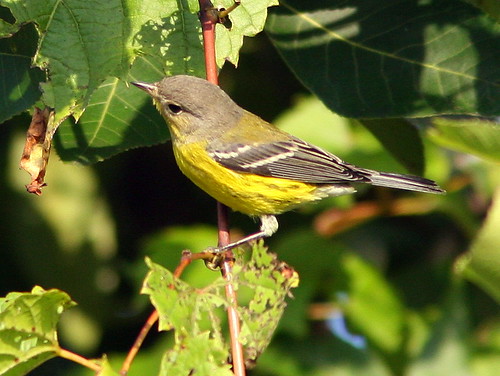
A female American Redstart forages activelyamong the branches:
The hordes of Palm Warblers that spend the winter in South Florida are often called “Florida Sparrows.” This one is southbound:
This undistinguished bird briefly poked its head out of the dense foliage. Only after I studied its photograph did I identify it as a first-fall Bay Breasted Warbler. 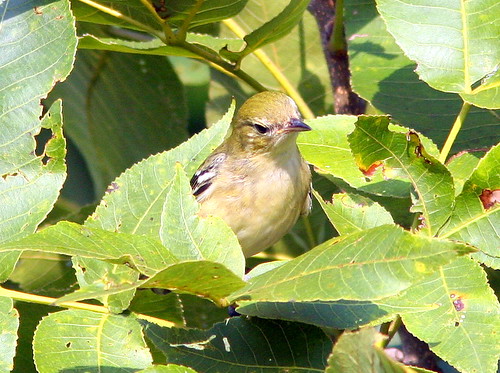
A Cooper’s Hawk wheels overhead:
Bird-finding and photography were hampered by dense morning fog most of the week.
One morning, we heard no other songs, though we heard three juvenile Sedge Wrens calling in the tall grass, unaccompanied by any adults that we could find. Perhaps the adults have already migrated south.
This tiny youngsters appears to be healthy and able to fend for itself:
Another morning, two waves of warblers passed silently through the woods that border the lake. The fog made conditions so poor that I could only identify a few out of the dozens flitting in the treetops, silhouetted against the dank gray sky.
Uncharacteristically, a Northern Flicker eats berries among the colorful tree leaves:
Returning one afternoon, after the fog had lifted, I found this three-foot Fox Snake sunning itself on the mud flats along a small creek: